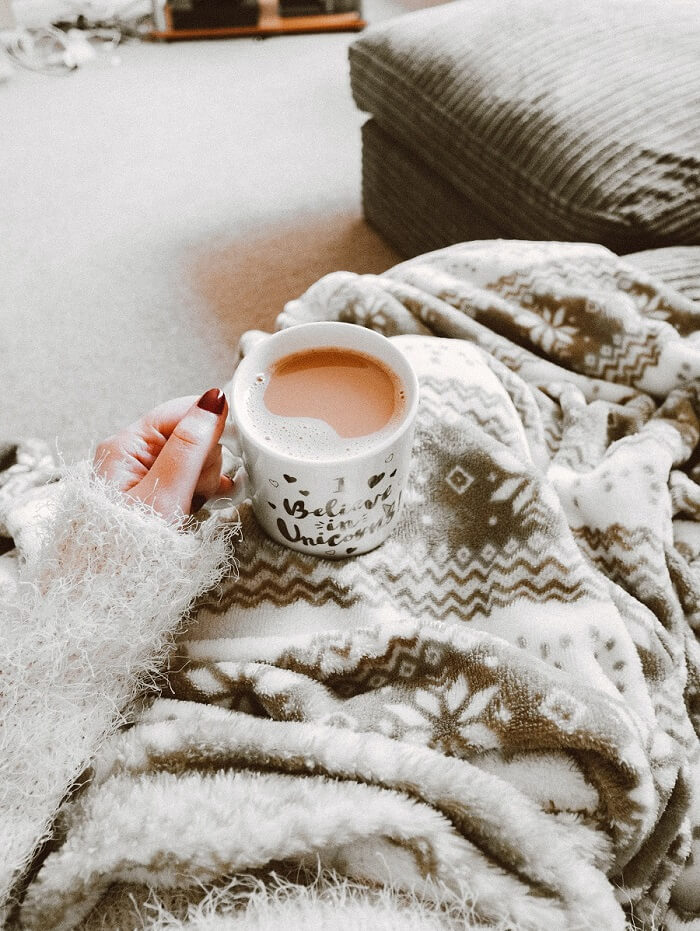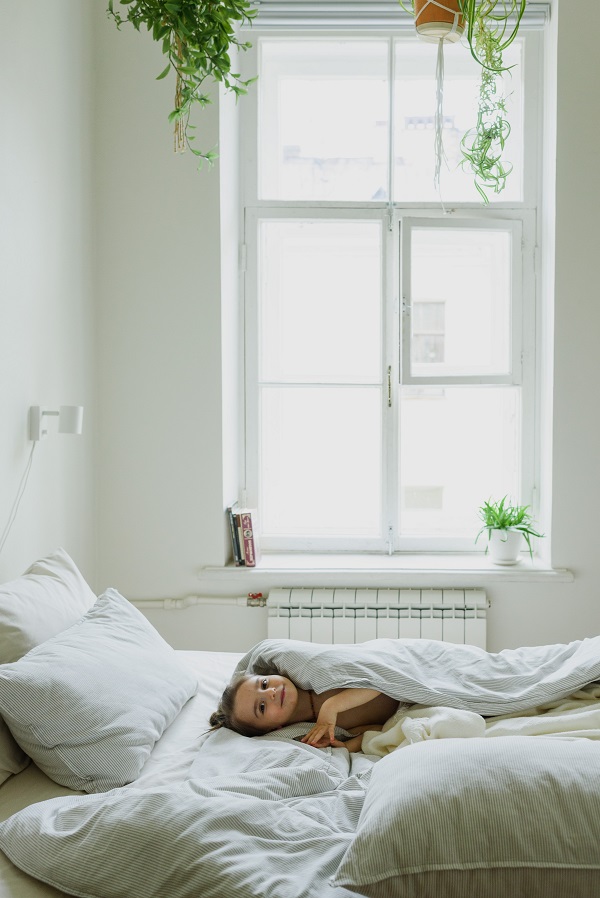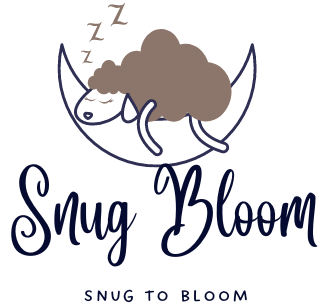Cuddling up in a well-made bed is a sort of luxury. To experience a luxurious sleep in a well-made bed, you need to understand the functions of different bedding items and how these articles can be arranged for a perfect bed. Blankets and comforters are bedding items that are often confused. Both blankets and comforters are bedding items that can help you getting nice and cozy in the bed. But what is the difference between comforter and blanket?
Both these items have some key differences in size, weight and their usage. This article is going to give all the blanket vs comforter information you need to have for a luxurious nights’ sleep. We will also explore into other similar bedding items, so follow along to know all about bedding details.
As the name suggests Comforters are comfy and warm bed coverings. They are bigger and thicker. Comforters are three layered with an insulating filling that is enveloped by outer layers on either side. On the other hand, blankets are usually smaller, they consist of a single layer and are generally less warm. The main purpose of blankets is to add a layer of warmth and comfort in bed whereas a comforter is sole responsible for keeping you warm and toasty.
Filling and Fabric: Blanket vs Comforter
Comforters typically have fillings of down feathers or synthetic fibers. These fillings give comforters warmth, insulation and cuddly feel.
Natural Down and Alternative down Filling:
Natural down comes from duck or geese feathers. These feathers coming from undercoat of birds are incredibly soft, cuddly and great in providing warmth to the bodies. Comforter filled with natural down are called down comforters. Check out our recommended down comforter.
With Alternative down (that comes from cotton, polyester, or some other synthetic fabric) similar levels of comfort and warmth can be achieved. Alternative down can be an option for people worrying about animal rights. But the synthetic material also has environmental impact. Alternative down can also be an option for people looking to have cheaper options as down fillings can be quite expensive.
Fill Power of Down comforters
The fill power of a comforter means the amount of material per announce as a filling. The higher the fill power, the warmer it will be. Typically a down comforter with a fill power of at least 600 will be suitable for most sleepers.
Fabric For Blankets
Blankets are all about fabric as they do not have any fillings. The warmth of blankets depend on the fabric used. Cotton, linen and bamboo fabric are lighter and keep people cool and comfortable. Wool, cashmere, minky, fleece etc. are highly insulating and help you in remaining warm and cozy.

Design: Blanket Vs Comforter
A comforter is designed in three layers::
- Front layer
- Back layer
- The inner filling (down or alternate down)
The blankets come in variety of sizes, shapes and colors. They are generally made with just one fabric layer and do not have any fillers in them (weighted blankets are an exception).
Size and Weight Differences: Blanket vs comforter
Comforters are made to cover whole of the bed which makes them quite big in size. They have an insulating filling which is usually made form organic down, cotton, polyester, or other synthetic materials. The filling makes them heavy, fluffy and warm.
Blankets on the other hand are smaller in size and are less bulky than comforters. They are made from a single layer of cotton, wool, fleece, polyester, or some other fabric.
Difference in Purpose : Uses of Comforters and Blankets
Comforters
- Comforters are mostly used in winter months as they provide high degree of insulation against cold
- They are used as the primary bedding article to keep bodies warm and cozy.
Blankets
Blankets can be used throughout the year; you can have warmer blankets for the winter months, and you can have soft comforting blankets for the summers. The level of warmth of the blankets depends on the fabric of the blankets. Blankets made from wool, fleece, polyester, minky and faux fur keep bodies warm in winters. Whereas, blankets made from cotton, bamboo and other such materials are cooling and breathable. They are used as a comforting layer in summers.

The use of blankets go beyond just a layer of warmth in bed, they are used as a source of warmth and comfort wherever needed. They are used in camping, picnics and in lounge activities.
Who is comforter best for?
Who is blanket best for?
Can comforter be washed in a washing machine?
Comforters can usually be dry cleaned only as they are too heavy and large to put in a domestic washer. Comforters with down and some other fillings more often require extra care when cleaning so preferably they need to be dry cleaned.
Can comforter be put in dryer
It is generally advised not to put comforters in dryer. The filling might not be suitable for tumble drying and huge size may also be not appropriate for domestic dryers.
Cleaning/Washing Blankets
Blankets are mostly washable at home; the washing ease of blankets depends on the fabric of the blanket. But generally washing of blankets is manageable at home. You need to see drying instructions of individual blankets to see if they can be tumble dried or not. For blankets made with synthetic fibers, they should not be washed in hot water.

Duvet vs Comforter
The word “duvet” is French equivalent to “down”. So classic duvet have down feathers as insulating filling. But what is the difference between a duvet and a comforter? These two bedding items are often confusing, and they are used interchangeably too sometimes, but let’s get into the details of duvet vs comforter.
A duvet is filled with an insulating layer of down feathers or any synthetic material but unlike a comforter it cannot be used as it is. You need a duvet cover to put this filling bag (or duvet) inside and use in a proper way. So, the main difference between a duvet and comforter is that, a comforter has all three layers (two covering layers and a filling layers) put together in a single ready to use bedding item, whereas a duvet cannot be used without a cover.
Duvet Covers
Duvet covers can be made from linen, cotton, flannel, silk and even sometimes faux fur. These covers are tied to the inserts with zippers, button or threads. The cover and insert should be tied in way that they are not too lose otherwise the duvet insert will keep on slipping inside the cover. Also duvet covers should not be smaller than the insert otherwise it will give a lumpy and uneven feel. Following are some interesting non conventional uses of duvet covers:
- Although, comforters don’t need covers, some people put duvet covers over comforters to increase longevity of comforters. So, in such cases comforters act as duvet inserts.
- Some people use cotton or linen duvet covers as flat bed sheets.
Try our recommended superset microfiber best selling duvet covet.
Benefits of a Duvet
- A duvet acts to keep people in bed warm and cozy by its warm insulating filling material.
- A duvet also acts to simplify making up a bed as a duvet can replace flat sheet, blanket and a quilt, thus reducing layers and making life easy.
- As a duvet cover is changeable and replaceable, you can have a new duvet for every occasion and season by just simply changing the duvet cover.
- You can have different fillings for duvets according to weather. In winter you can have warm fillings like down, plush and minky. In summers you can have fabrics like cotton in fillings.
Washing A duvet Cover and Duvet Insert
- Washing a duvet cover is usually easy and can be done easily at home washer. We recommend washing duvet covers at least once a week.
- Washing a duvet insert requires special care , if the label reads ” dry clean only” ,you should never put it in home washer as you run the risk of damaging insert fibers.
Pros and Cons of a Duvet
Pros
Cons
Summary
Blankets, comforters and duvets are bedding items that are often confused. These are used to keep bodies warm, toasty and comfortable but these have some subtle differences that need to be understood. Blankets are a versatile single layer of fabric that help to keep bodies warm and comfortable. Comforters are bigger, heavier, warmer and are made up of a filling enveloped in two outer layers. Duvets also have filling layer like comforters but duvet need a cover (duvet cover) to envelope the insert. Hope, this settles all blanket vs comforter and duvet vs comforter debates.





Pingback: The best Comforters for Bunk Beds: A Guide to Choosing the Perfect Bunk Bed Bedding - snugbloom.com